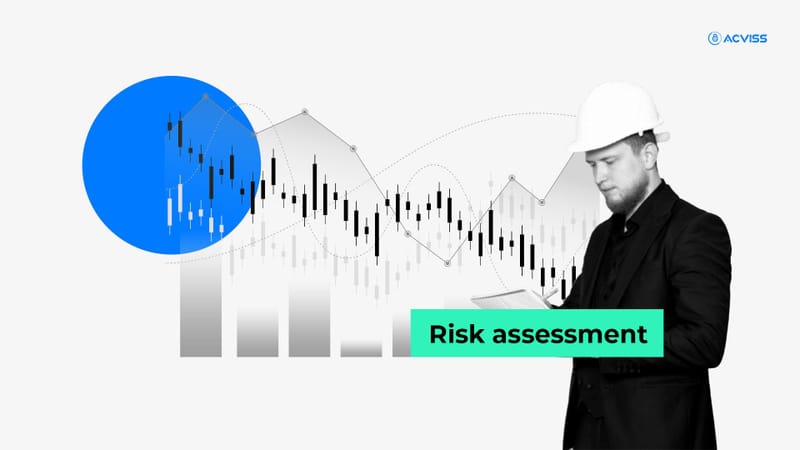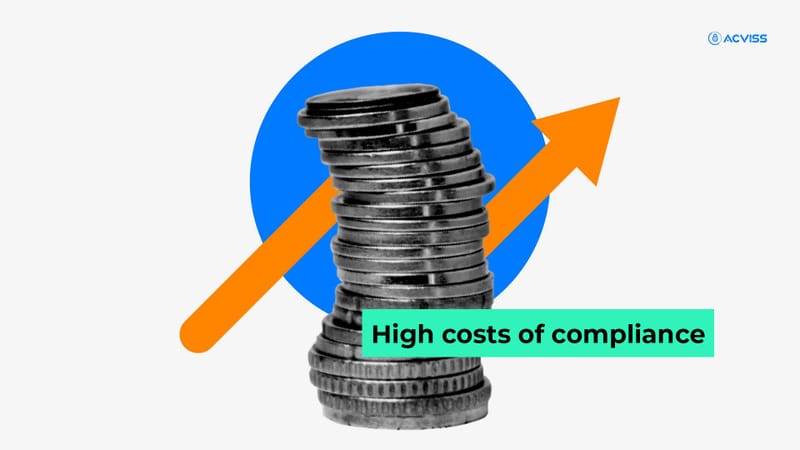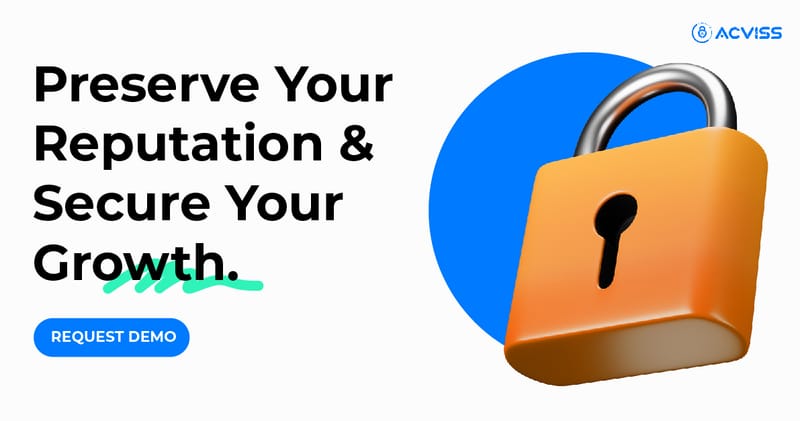How to Conduct Risk Assessment and Mitigation Under EUDR
European Union Deforestation Regulation (EUDR) is an initiative by the EU to contribute towards global deforestation. The purpose of EUDR regulation is to completely eradicate the use of products that are sourced from or made from commodities that are from deforested land by restricting its entry into the European market.
The EUDR regulations will highly impact the businesses operating in the European market, such as traders, export businesses like coffee exporters, and much more. The commodities that come under the scope of EUDR regulation are:
- Coffee
- Soy
- Cocoa
- Palm oil
- Timber
- Cattle
- Rubber
Any of these commodities or products made out of these commodities, like meat, furniture, coffee, etc., should be sourced from non-deforested land.
Deforested land is land that was deforested after December 2020. Items sourced from such land and products made out of such commodities are prohibited from being sold in the European market under EUDR regulation. The EUDR regulation will be enforced in the European market from 30 December 2024 for companies and 30 June 2025 for small businesses. It is important for the businesses operating or willing to operate in the European market that they start preparing for the EUDR regulation as soon as possible. For export businesses like coffee exporters, a proper supply chain with a proper track and trace system ensures the products are sustainable.
Steps of EUDR Compliance
1. Understand EUDR Requirements: To comply with the EUDR regulations first, familiarise yourself with the EUDR. Understand its targeted commodities (like coffee, soy, and palm oil) and the requirement for deforestation-free and legally produced goods.
2. Traceability and Supply Chain Mapping: The most important factors in compliance with EUDR regulations are traceability and supply chain management. Ensure that your supply chain is transparent by mapping out all suppliers and origins of your commodities. Implement traceability systems to track products from origin to end.
3. Conduct Risk Assessments: Even a small mistake can lead to non-compliance. Thus, it is important to conduct a thorough risk assessment to avoid any trouble. Focus on high-risk areas and commodities and regularly assess the risk of deforestation and legal violations in your supply chain.

4. Implement Due Diligence Measures: Keep ready a due diligence protocol to monitor and verify that your products comply with EUDR standards. This includes third-party audits, documentation, and continuous monitoring.
5. Documentation and Reporting: A thorough record of all complaint efforts should be maintained. Make sure your traceability data, risk assessments, and due diligence measures are all recorded, and be prepared to submit these reports during EUDR audits.
6. Adopt Technological Solutions: Utilise advanced technologies like satellite imagery, blockchain, and GIS to enhance traceability, data management, and compliance monitoring.
7. Engage in Continuous Improvement: Regularly review and update your compliance practices to adapt to evolving regulations and mitigate emerging risks. Collaborate with stakeholders for better compliance.
What is Risk Assessment and Mitigation?
For EUDR regulation, risk assessment means identifying and evaluating the potential risks in the supply chain that could lead to violation of the EUDR due to deforestation or any other legal aspect.
For Example: Let's say a coffee exporter sources beans from multiple regions. Some of these regions also include some areas that were deforested after December 2020. The exporter identifies that these regions present a high risk of non-compliance with EUDR regulations due to recent deforestation and unclear land ownership laws. The exporter uses satellite imagery and local audits to assess the extent of deforestation and legal compliance in these areas. This is called assessing the risk.
Risk mitigation is basically taking proactive measures to reduce or eliminate these risks.
For example, let's continue with the above scenario of a coffee exporter. The coffee exporter who suspected the risk of non-compliance in a particular region of sourcing decides to shift sourcing to regions that are verified as deforestation-free. They implement a blockchain-based traceability system to ensure that every batch of coffee can be traced back to compliant farms. Additionally, they conduct regular third-party audits and collaborate with local farmers to improve sustainable practices, ensuring that all products meet EUDR standards before exporting to the EU market. This is called mitigating the potential risk to prevent the future blunder.
Both processes are essential for companies that want to operate in the European market and want to comply with EUDR regulations.
Key Factors in Risk Assessment
The key factors in risk assessment that are potential threats are deforestation, legal violations, lack of supply chain transparency, and non-compliance with local laws. Violation of any of the factors may lead to a risky zone for EUDR regulation compliance. Thus, it is necessary to have a clear and systematic process for risk analysis so that nothing is missed. The ideal process of risk analysis involves the following:
1. Analysing Environmental and Socio-Economic Factors
- Deforestation Rates: Examine recent land use changes, especially in regions known for deforestation. This will help to determine if sourcing from these areas could violate EUDR standards.
- Legal Compliance: Assess the legal status of land use in sourcing areas to ensure that all farming or extraction practices adhere to both local and EUDR regulations.
- Supply Chain Transparency: Evaluate the ability to track the complete supply chain from right from the farm to the market. Lack of transparency can obscure potential risks, making it harder to verify compliance.
- Social Impact: Consider the socio-economic effects of sourcing, such as the impact on local communities and indigenous peoples. These factors can also lead to the risk of non-compliance, as social unrest or land disputes might lead to legal violations.
- Biodiversity Concerns: Identify areas of high biodiversity that might be at risk due to sourcing practices. Protecting these areas aligns with EUDR's environmental goals.
By thoroughly analysing these factors, businesses can better understand the potential risks and take preventive measures to mitigate them, ensuring they meet EUDR compliance standards.
Must Read: EUDR for Operators and Traders
2. Collecting and Analysing Data
Data collection is crucial for EUDR compliance. Collecting and analysing the data helps streamline the complex work and manage the complexity of the supply chain from the farm to the hands of the consumer. The records that are well analysed can help in reading the trends or past violations, thereby making the business aware of the potential risk and taking the necessary steps for the same. The collection and analysis of the data include techniques like satellite imagery, supply chain audits, and GIS to monitor land use changes, deforestation, and legal compliance.
3. Implementing Due Diligence Measures
Due diligence involves establishing protocols to monitor and verify compliance with EUDR standards. That is to present the happenings of all the activities happening in the supply chain and how they happened, all in a documented format. To do this, a business needs to conduct thorough supply chain monitoring, perform third-party audits, and conduct continuous data collection and analysis. Implementing these due diligence measures will ensure that businesses can prove their products are deforestation-free and legally produced and, therefore, fit all the guidelines of EUDR regulation.
4. Ensuring Documentation and Reporting
It is crucial to do the documentation and reporting accurately for EUDR compliance. Companies must maintain thorough records of all compliance efforts, which include traceability data of source of land, where the goods were stored, how they were transported, and much more, as well as risk assessment and mitigation measures and due diligence measures. This documentation is essential for EUDR audits and for demonstrating compliance.
Challenges in Risk Assessment
Risk assessment to comply with EUDR regulations is a challenging task. Businesses may face several challenges:
Limited access to reliable data: It is difficult to get reliable data from the suppliers. They may lie about the data to complete the transaction.
High costs of compliance: The cost of compliance and its maintenance may come with a handsome monetary burden as the process is complex and mandatory, which may lead to high essential and legal charges.

The complexity of supply chains: The supply chain is usually very complex, and various factors are involved. Given the requirements of EUDR regulations, it becomes even more complex to keep track of every minor thing, like the exact geo-location of the sourcing land, legality and local law compliance, and adherence to the separate storage and transportation requirements. Failing to comply with any of these factors in the supply chain may lead to non-compliance and rejection in the European market, and in some cases, this may also lead to serious penalties.
These challenges require strategic planning and investment to overcome.
Best Practices for EUDR Compliance
To comply with the European Union Deforestation Regulation (EUDR), businesses should focus on a few key best practices.
- Using advanced technologies such as blockchain and satellite imagery can greatly enhance supply chain transparency and traceability. Blockchain, for example, can securely track the origin and movement of commodities, ensuring they come from deforestation-free sources. Satellite imagery helps monitor land use changes in real time, providing critical data on deforestation risks.
- Collaboration with stakeholders, which includes suppliers, local communities, and third-party auditors, is another crucial aspect. Building strong partnerships ensures that all parties are aligned with EUDR standards, reducing the risk of non-compliance. Regular communication and collaboration help to identify potential issues early and allow for joint problem-solving.
- Continuous monitoring and improvement are essential to staying compliant. The regulatory landscape and environmental conditions can change, so businesses must regularly review and update their compliance strategies. This includes re-evaluating risk factors, updating due diligence protocols, and ensuring that all processes are well-documented and transparent.
Must Read: Checklist for avoiding a brand ban in Europe
Risk Mitigation
Risk mitigation involves addressing identified risks beforehand to prevent potential violations of the EUDR regulations. There are a few effective strategies for risk mitigation.
- Adjust sourcing practices to prioritise regions with verified deforestation-free status. This might involve shifting suppliers or even changing the geographic focus of sourcing efforts to ensure compliance. For example, if you are a coffee exporter and let the 'X' location have a higher risk that the coffee might get produced on deforested land, then you might want to shift to the 'Y' location.
- Investing in sustainable technologies is another critical measure. For example, adopting eco-friendly farming practices or supporting reforestation initiatives can help mitigate environmental risks. These actions not only ensure compliance with EUDR but also contribute to broader sustainability goals.
- Employee training is also a vital component of risk mitigation. Ensuring that all team members understand the EUDR requirements and are equipped to implement compliance measures is key to avoiding mistakes. Regular training sessions can keep staff updated on the latest regulations and best practices, ensuring that everyone is working towards the same compliance goals.
By implementing these strategies, businesses can effectively manage and mitigate risks, ensuring that their operations remain compliant with EUDR standards.
Leveraging Technology for Enhanced Risk Analysis
Technology plays a crucial role in risk analysis. For example, blockchain technology can provide secure and transparent traceability of products, while AI can analyse large datasets to identify patterns and predict risks. Tools likeOrigin by Acviss can assist businesses in meeting EUDR requirements by providing robust tracking, traceability, and data management solutions.
Upholding EUDR Compliance
Compliance with EUDR is not just a legal requirement but an opportunity for businesses to contribute to global sustainability efforts. By following the steps outlined above, businesses can ensure their supply chains are deforestation-free, legally compliant, and well-positioned to succeed in the European market. Leveraging technology, continuous improvement, and collaboration are key to achieving and maintaining compliance with EUDR regulations.


